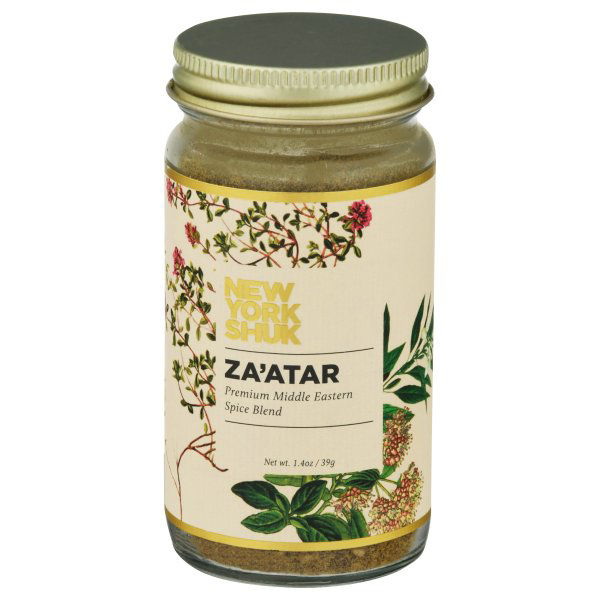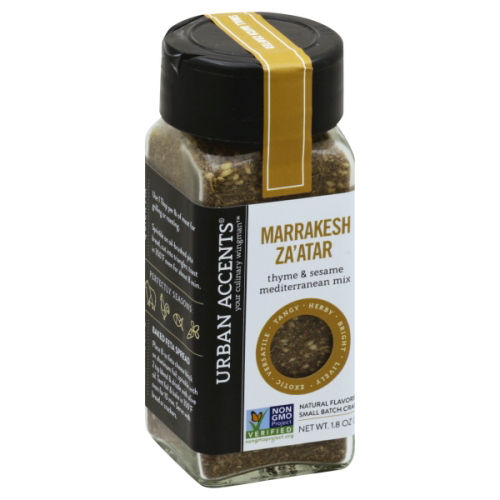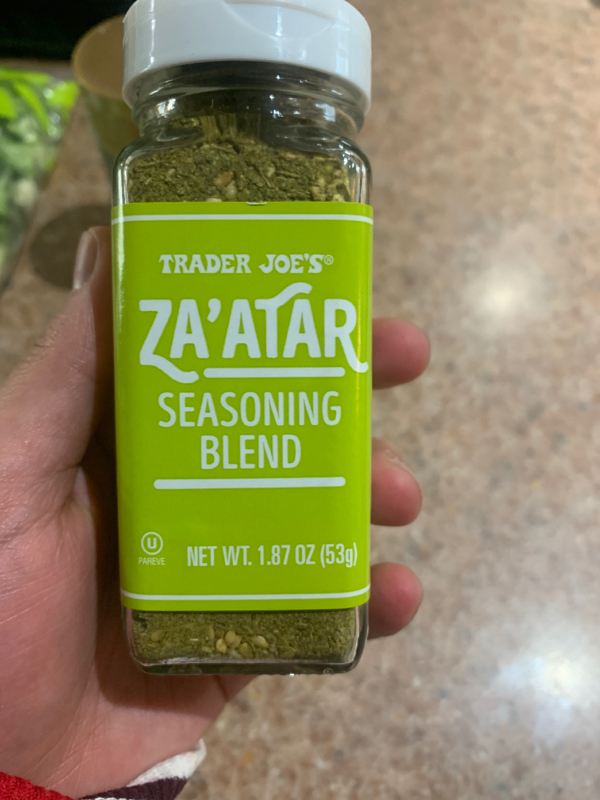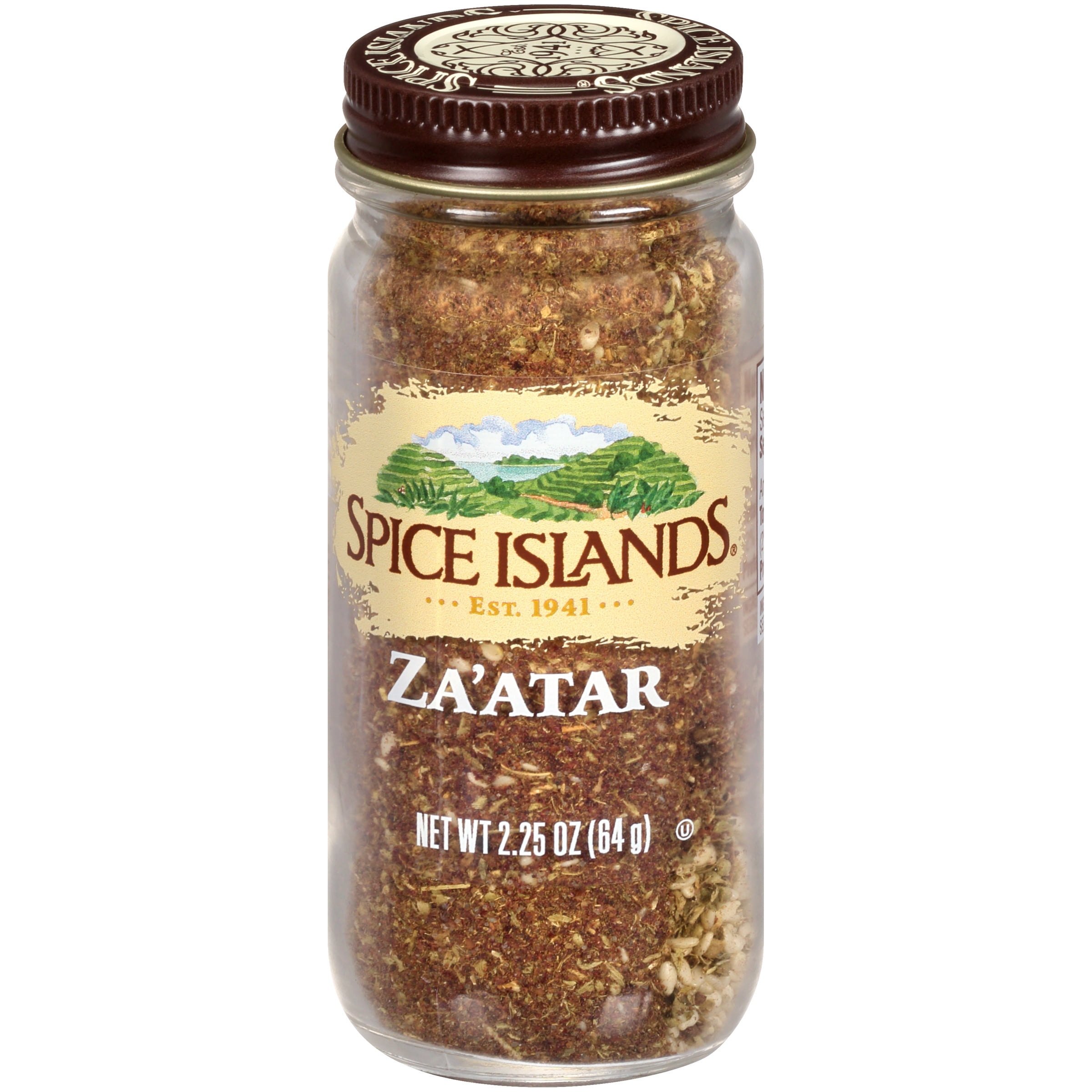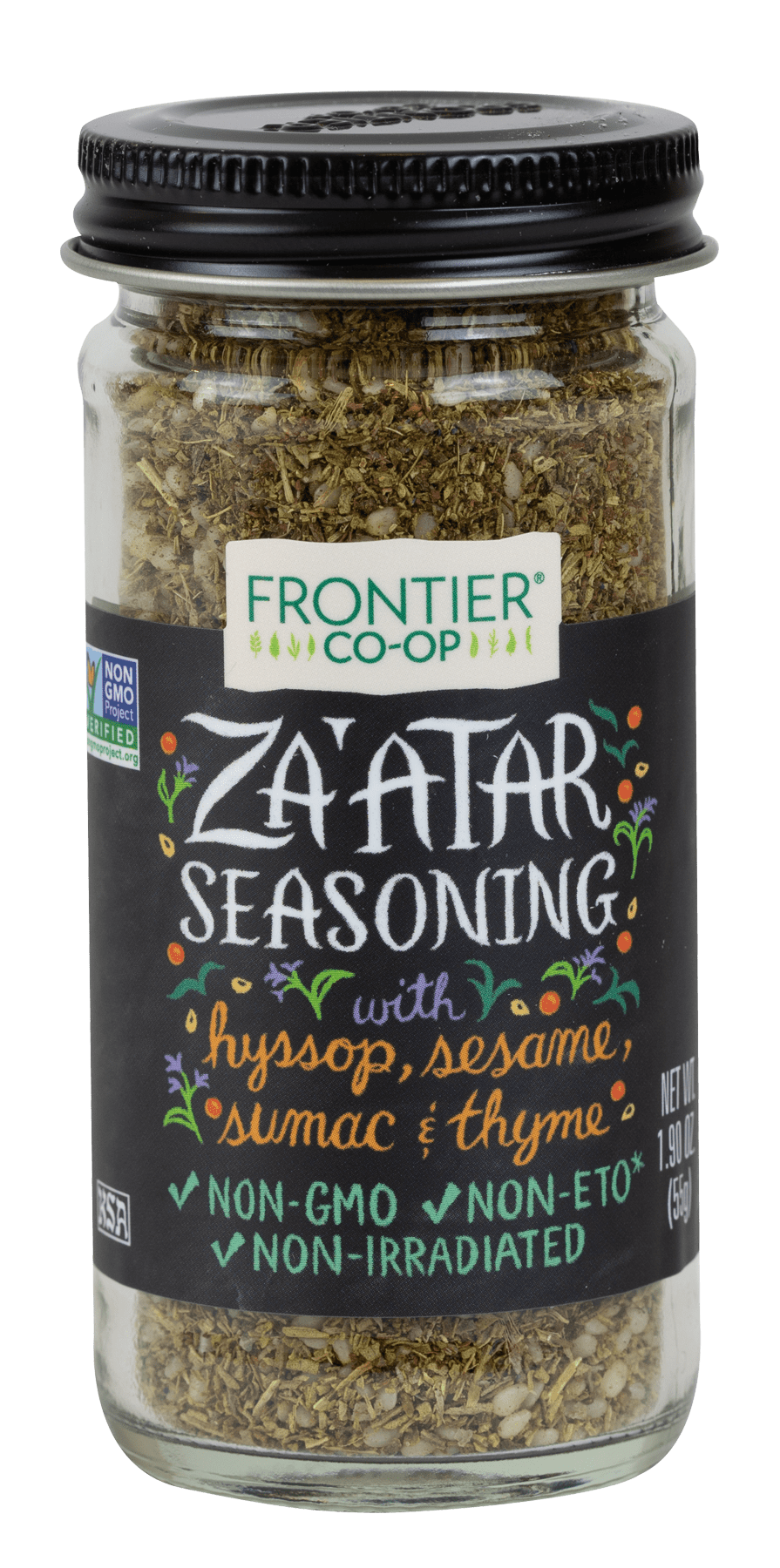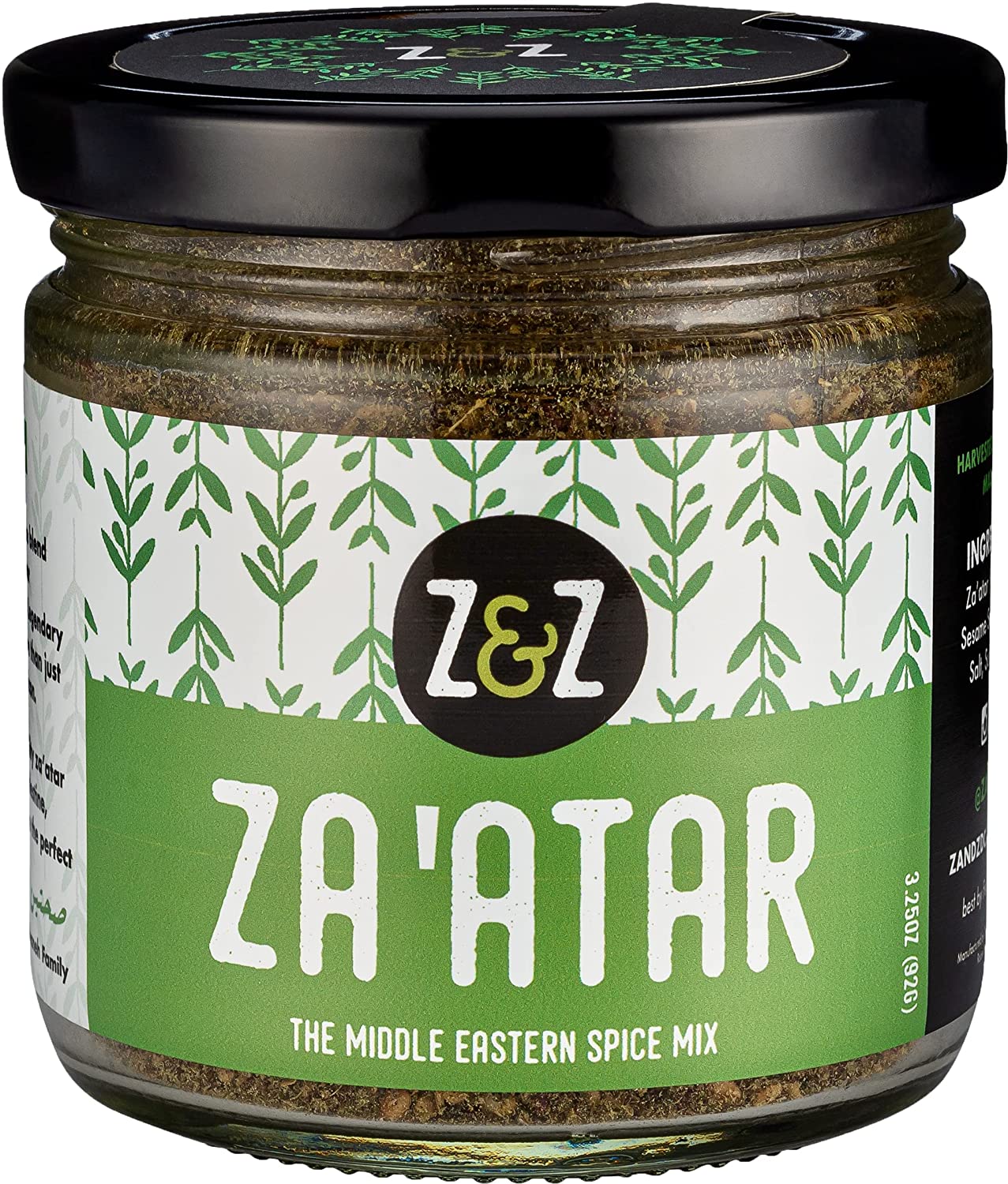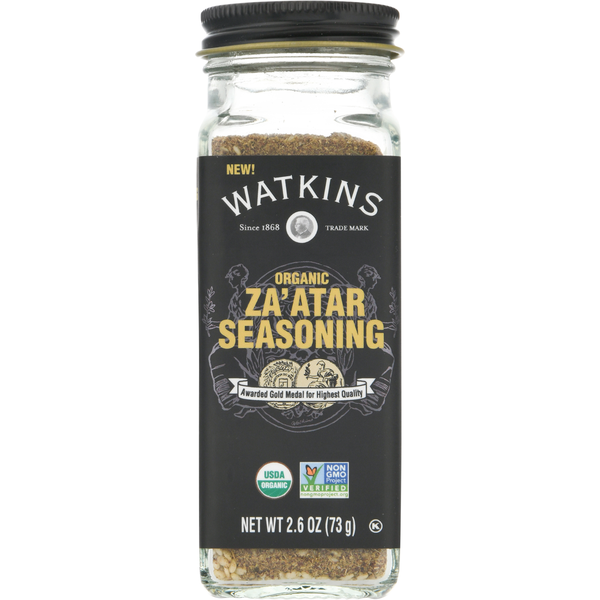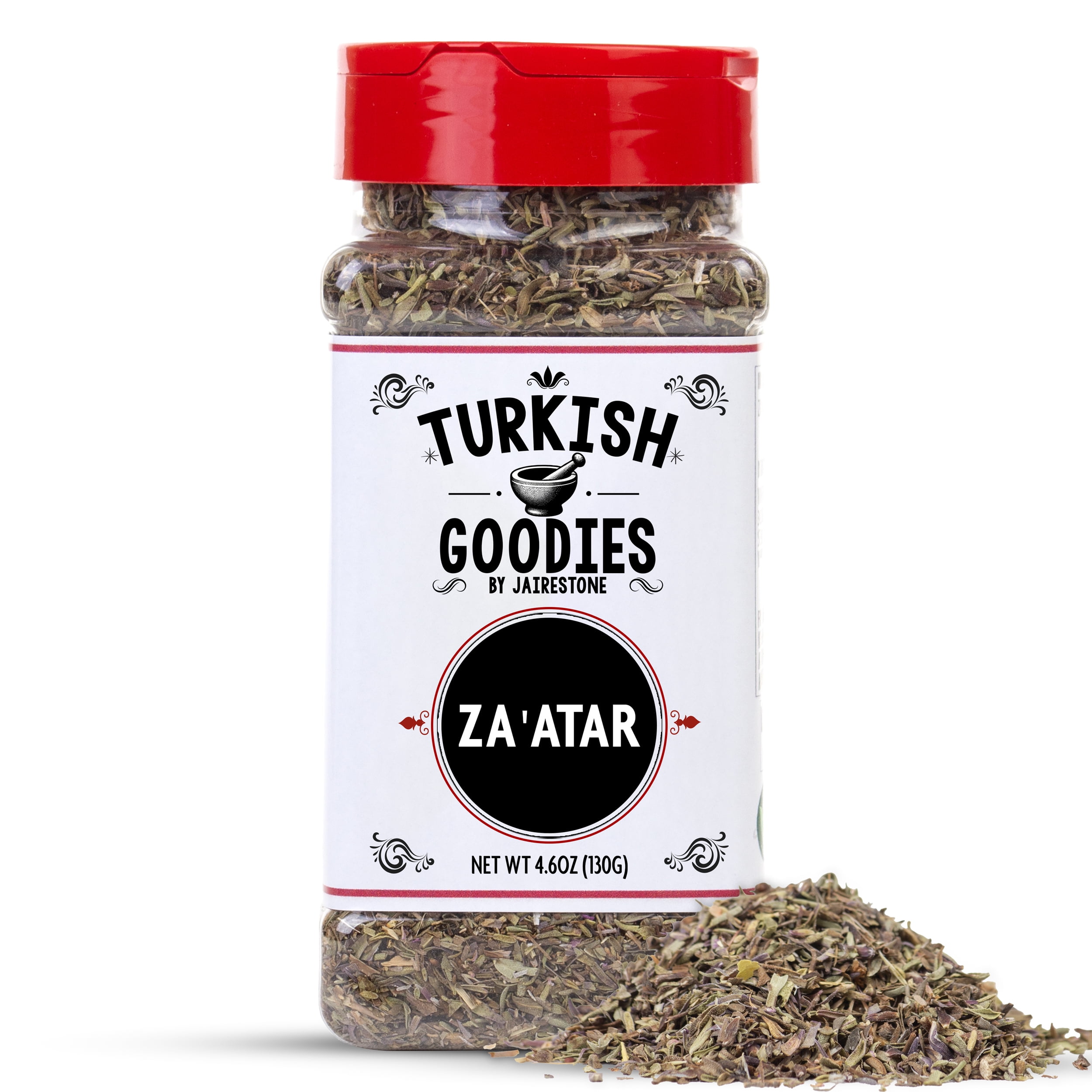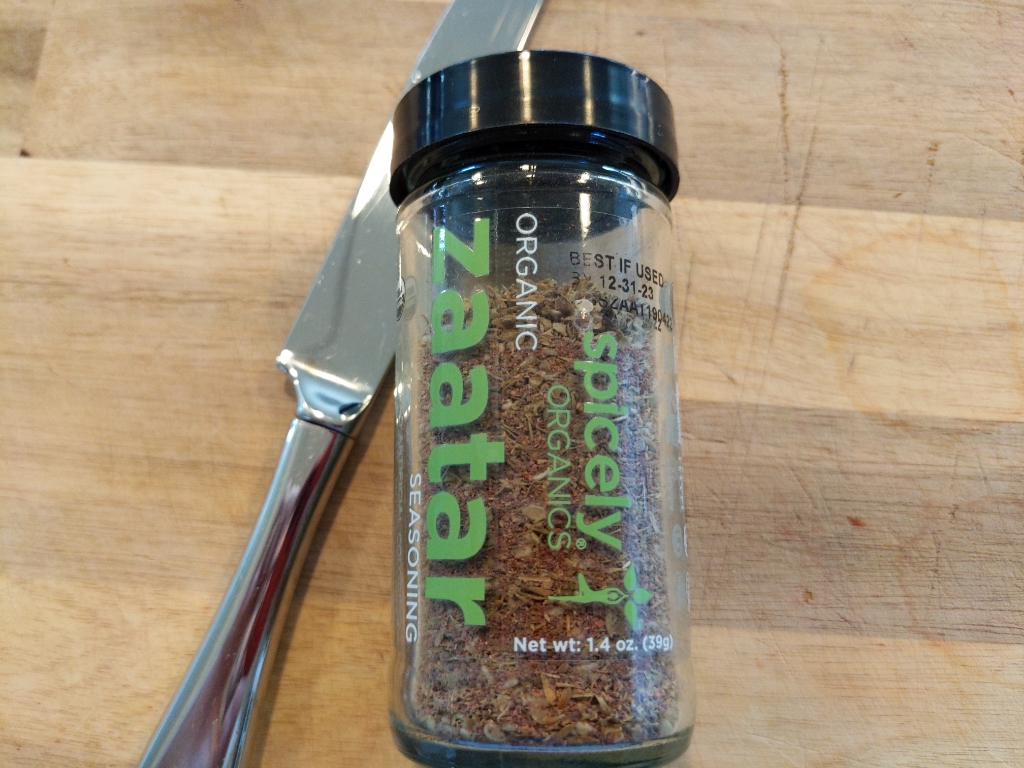BREADS
SALADS
APPETIZERS
Za'atar
Za'atar is a popular Middle Eastern and Mediterranean spice blend consisting of sumac, toasted sesame seeds, and dried herbs such as oregano, thyme, and marjoram. This versatile spice mix varies slightly depending on the region, but it's traditionally either sprinkled on food as a seasoning or mixed with olive oil to create a dip.
Home cooks and consumers use za'atar in a variety of ways, from seasoning meats, poultry, and vegetables to the confection of marinades and salad dressings. Its unique combination of flavors adds a zesty tang and earthy warmth to dishes, making it a go-to spice blend for enhancing everyday meals.
#112
IN SEASONINGS
$2.08
AVG / OZ
209 Za'atar Products
New York Shuk Spice Blend, Za'Atar
Urban Accents Mix, Marrakesh Za'atar
Private Selection® Middle Eastern Inspired Za'Atar Blend Shaker
Zaatar Seasoning
Spice Islands® Za'atar
Frontier Co-op Za'atar Seasoning
Za'atar by Z&Z (Zaatar/Zatar/Zahtar) – Premium Za'atar
Watkins Organic Za'atar Seasoning, Spice Mix
Zaatar Spice Blend
Zaatar Seasoning (Organic)
Used In 10 Recipes
2
Lemony Za'atar Chicken Thighs with Creamy Garlic Yoghurt and Herb-infused Rice
1
Crunchy Spiced Chickpea Snack
1
Mediterranean Bliss Meatballs with Creamy Tzatziki
Juicy Za'atar Chicken with Crispy Chickpeas and Creamy Tahini Drizzle
1
How to Roast Chickpeas
1
Frieds Egg with Green Tahini and Pita
Easy Falafel Recipe
21
Crispy Smashed Potatoes with Garlic and Za'atar
Za'atar Is Frequently Used With
Za'atar FAQ
When cooking with za'atar, one of the most common mistakes people make is using it too sparingly or adding it too early while cooking. Because za'atar is a dry spice blend, it can lose its potency when exposed to heat for too long. The best way to get the most out of za'atar is by adding it towards the end of the cooking process or, better still, sprinkling it on the dish just before serving. This allows the spice's vibrancy and freshness to shine through. People also often overlook the possibility of making the za'atar blend at home, where they can adjust the amounts of each component per their liking.
Za'atar is not only for savory dishes, it can add an unexpected yet pleasant twist to some desserts and sweet pastries. Additionally, mixing za'atar with a good quality olive oil can enhance its flavors - a common trick in Middle Eastern cuisine.
Can I use za'atar as a substitute for thyme?
Is there a substitute for za'atar in recipes?
What does za'atar taste like?
Can I make za'atar at home?
Is za'atar spicy?
Can I use za'atar on vegetables?
Can za'atar be used in sweet dishes?
What are the benefits of consuming za'atar?
Is za'atar gluten-free?
Can I use za'atar in salads?
Expiration & Storage Tips
When does za'atar expire?
Za'atar, like other dried spice blends, has a relatively long shelf life. Unopened, za'atar can last between 2 to 3 years, so don't worry if the date printed on the package seems ages away - it likely is! Once opened, za'atar should ideally be used within 6 months as it gradually loses its flavor over time. However, it won't spoil quickly and can still be used for up to 1 year. Please note that homemade za'atar, if done with freshly dried herbs, might have a slightly shorter shelf life. As for freezing, it's not commonly done as it can negatively affect the taste and texture.
How do you tell if za'atar is bad?
Your senses are your best ally here. Firstly, the color of za'atar shouldn't change drastically over time. If it appears faded, it may be past its prime. Next, give it a good smell. Fresh za'atar has a strong, aromatic scent. If it doesn't smell as potent or if it has an unpleasant smell, it might have gone bad. Finally, the taste. Fresh za'atar has a distinct flavor with a slight tang from the sumac. If the taste is bland or off, it's probably time to replace it.
Tips for storing za'atar to extend shelf life
• Always store za'atar in an air-tight container away from direct sunlight. Pantry or a spice drawer is ideal.
• Avoid using wet spoons or introducing any moisture into the container as it can lead to the growth of fungus.
• Purchase in smaller quantities if you don't use it quite often since its flavor degrades over time.
• Do a freshness test every few months by giving the za'atar a quick smell to see if it's still potent and flavorful.
EXPIRES WITHIN
2 - 3.6
YEARS
Substitutes
Health Info
Macros
Allowed on these diets
LOW FAT
HIGH CALCIUM
VEGETARIAN
KETO
PALEO
WHOLE 30
MEDITERRANEAN
LOW CARB
VEGAN
LACTOSE FREE
GLUTEN FREE

